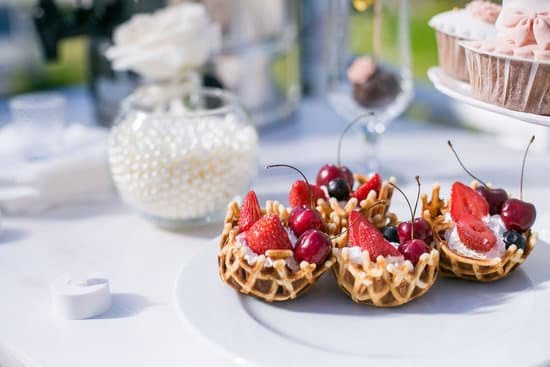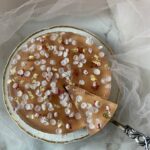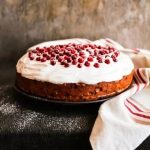Chocolate decorations are a popular and delicious way to enhance the visual appeal of cakes, adding a touch of elegance and sophistication. In this article, we will explore how to make chocolate decorations for cakes, from the basic techniques to more advanced methods.
The versatility of chocolate in cake decorating allows for endless creativity, making it a favorite choice among bakers and pastry chefs. Whether you’re looking to create simple shapes or intricate designs, chocolate offers a wide range of possibilities for adding flair to your cakes.
Before diving into the techniques and tools needed for creating chocolate decorations, it’s important to understand the different types of chocolate that can be used and their unique qualities. From dark chocolate to white chocolate, each type has its own characteristics that make it suitable for specific decorative purposes.
In addition to exploring the various types of chocolate, we will also discuss tips for effectively melting and tempering chocolate to achieve the perfect consistency for creating decorations. Stay tuned as we uncover the essential tools and materials needed to turn ordinary cakes into stunning works of art with delectable chocolate adornments.
Types of Chocolate to Use for Decorations
When it comes to making chocolate decorations for cakes, the type of chocolate you use can make a big difference in the final result. There are several different types of chocolate that are commonly used for decorations, each with its own unique characteristics and uses. Here are some common types of chocolate to consider using for your cake decorations:
- Dark Chocolate: With its rich and intense flavor, dark chocolate is a popular choice for creating chocolate decorations. It’s ideal for creating intricate designs and adding a bold, sophisticated touch to cakes.
- Milk Chocolate: Known for its creamy and sweet flavor, milk chocolate is perfect for creating smooth and visually appealing decorations. It’s also a great option for those who prefer a milder chocolate flavor.
- White Chocolate: While technically not “chocolate” in the traditional sense, white chocolate can still be used to create beautiful decorations with its creamy texture and sweet taste. It’s especially well-suited for adding contrast to darker colored cakes.
When it comes to melting and tempering chocolate for decorations, it’s important to choose high-quality chocolate that melts smoothly and sets well. Look for couverture chocolate, which contains a higher percentage of cocoa butter and is specifically designed for melting and molding. Avoid using compound chocolates, as they have added vegetable fats that can affect the texture and taste of your decorations.
To ensure success with your chocolate decorations, it’s essential to properly melt your chosen type of chocolate. You can do this using a double boiler or by gently melting in the microwave in short intervals while stirring frequently.
Once melted, you’ll want to temper the chocolate by gradually cooling it down while stirring until it reaches the right temperature for shaping and setting properly. Using a candy thermometer can help ensure that you achieve the correct temperature for tempering your chocolate.
With these tips in mind and the right type of chocolate at hand, you’ll be ready to start creating stunning decorations to elevate your cake designs.
Tools and Materials Needed
Creating chocolate decorations for cakes requires the right tools and materials to ensure success. The essential tools for making chocolate decorations include a piping bag, parchment paper, offset spatula, and molds for shaping the chocolate. These tools can be easily found at specialty baking stores or online. It’s important to invest in high-quality tools to achieve professional-looking results.
When it comes to choosing the right chocolate for decorations, it’s crucial to use high-quality chocolate that has a good flavor and a smooth texture. Dark, milk, and white chocolate are commonly used for cake decorations, each offering a unique flavor profile and color. It’s also important to consider whether you are using pure chocolate or compound chocolate, as they have different melting and tempering properties.
| Tools | Materials |
|---|---|
| piping bag | parchment paper |
| offset spatula | molds |
In addition to the basic tools and materials needed, sourcing high-quality chocolate is essential for creating beautiful and delicious decorations. Look for couverture or high-quality baking chocolate with at least 70% cocoa content for the best results. Couverture chocolate contains a higher percentage of cocoa butter, which allows it to melt smoothly and set with a glossy finish.
By using the right tools and materials, such as a piping bag, parchment paper, molds, and high-quality chocolate, aspiring bakers can learn how to make chocolate decorations for cakes that will impress their friends and family.
Basic Chocolate Decorating Techniques
Step-by-Step Guide
To start, you will need to melt the chocolate. You can do this either in a double boiler or in the microwave, but be sure to melt it slowly and stir often to avoid burning the chocolate.
Once melted, transfer it to a piping bag or a plastic squeeze bottle for easy application. To create simple decorations like curls, shavings, or drizzles, simply pipe or pour the melted chocolate onto a parchment-lined baking sheet and allow it to set before carefully peeling off the decorations.
For basic piping techniques, such as creating shapes or writing on cakes, fill a piping bag with melted chocolate and practice your designs on a piece of parchment paper before applying them to your cake. You can also use molds to create solid chocolate shapes by pouring the melted chocolate into the molds and allowing it to set.
Tips for Piping and Shaping
When piping chocolate onto a cake, make sure the cake is completely cooled to prevent melting. Hold the piping bag at a 45-degree angle for optimal control and always work quickly before the chocolate hardens. If you’re shaping chocolate by hand, consider wearing food-safe gloves to keep the warmth of your hands from melting the chocolate too quickly.
It’s important to practice these techniques beforehand on a test surface so that you feel confident when decorating your actual cake. Remember that working with chocolate takes patience and precision, so don’t be discouraged if your first attempts aren’t perfect.
Using Molds
Molds are an easy way to create consistent and professional-looking decorations. Simply pour melted chocolate into clean molds and tap them gently on the counter to release any air bubbles. Let them set completely before carefully removing them from their molds. Various silicone molds are available in different shapes and sizes for making anything from simple hearts and stars to intricate flowers and geometric designs.
By mastering these basic chocolate decorating techniques, you’ll be able to add beautiful finishing touches to your cakes that will impress both family and friends alike. With practice, you can elevate your cake decorating game by incorporating more intricate designs using advanced techniques.
Advanced Chocolate Decorating Techniques
Creating Intricate and Detailed Chocolate Decorations
Once you have mastered the basic techniques for making chocolate decorations for cakes, you can start experimenting with more advanced methods to create intricate and detailed designs. This could include using chocolate transfers, hand-painting with colored cocoa butter, or creating delicate chocolate lace. These techniques require a steady hand and patience, but the results can be truly stunning.
Using Stencils and Other Advanced Techniques
One way to achieve professional-looking chocolate decorations is by using stencils. Stencils allow you to create precise patterns on your chocolate decorations without requiring a high level of skill. You can also try using 3D molds to create sculptural chocolate pieces that will add depth and dimension to your cake designs. Additionally, transferring printed images onto chocolate can result in visually striking decorations that are sure to impress.
Experimenting With Different Textures and Finishes
Another way to elevate your chocolate decorations is by playing with different textures and finishes. For example, you can use edible metallic dust or luster dust to give your chocolate decorations a shimmering finish. You can also experiment with adding texture by incorporating elements like crushed nuts, edible glitter, or candied flowers into your chocolate designs. These little touches can take your cakes from ordinary to extraordinary.
By incorporating these advanced chocolate decorating techniques into your repertoire, you can take your cake decorating skills to the next level and create show-stopping masterpieces that will delight both the eyes and taste buds of anyone who sees them.
Common Mistakes to Avoid
When making chocolate decorations for cakes, it is important to be aware of the common mistakes that can occur during the process. Avoiding these pitfalls will help ensure that your chocolate decorations turn out beautifully and enhance the overall appearance of your cakes. Here are some common mistakes to avoid when making chocolate decorations for cakes:
- Using low-quality chocolate: One of the most important factors in creating successful chocolate decorations is using high-quality chocolate. Using low-quality chocolate can result in decorations that do not set properly, have a dull appearance, or lack flavor.
- Skipping the tempering process: Properly tempering chocolate is essential for achieving glossy and stable decorations. Skipping this step can result in dull or streaky-looking decorations that may not set properly.
- Not allowing enough time for setting: When creating intricate chocolate decorations, it is important to allow enough time for them to set completely before handling or placing them on a cake. Rushing this process can result in cracked or misshapen decorations.
Additionally, it’s important to pay attention to the temperature and humidity of your working environment when making chocolate decorations. Extreme temperatures or high humidity can affect the texture and stability of the chocolate, making it more difficult to work with.
By being aware of these common mistakes and taking steps to avoid them, you can create beautiful and professional-looking chocolate decorations for your cakes. Now that you know what to watch out for, you can confidently try your hand at making stunning chocolate decorations for your next cake creation.
Tips for Storage and Presentation
When it comes to creating beautiful and delicious chocolate decorations for cakes, it’s important to not only focus on the creation process but also on the storage and presentation of these decorations. Proper storage ensures that your chocolate decorations stay fresh and in perfect condition until they are ready to be placed on the cake.
Presentation, on the other hand, adds the final touch to your cake design, making it visually appealing and appetizing. In this section, we will explore some useful tips for both storing and presenting chocolate decorations for cakes.
First and foremost, proper storage is crucial for maintaining the quality of your chocolate decorations. It is recommended to store them in a cool, dry place away from direct sunlight and heat. Chocolate has a low melting point, so it’s essential to keep the temperature stable to prevent any unwanted changes in texture or appearance. Additionally, make sure to store your chocolate decorations in an airtight container to protect them from moisture and odors that could affect their flavor.
When it comes to presentation, there are numerous creative ways to showcase your chocolate decorations on cakes. From simple designs like chocolate curls and shards to more intricate shapes like flowers and intricate patterns, each decoration can enhance the overall look of the cake. For example, you can strategically place chocolate curls around the borders of a layered cake or arrange delicate chocolate flowers on top of a single-tiered cake for an elegant touch.
To further elevate the presentation of your chocolate decorations, consider adding complementary elements such as fresh fruits, edible flowers, or sprinkles around them. These added touches not only enhance the visual appeal of the cake but also provide contrasting flavors and textures that delight anyone who takes a bite.
| Chocolate Decorations Tips | Storage Tips | Presentation Ideas |
|---|---|---|
| Store in a cool, dry place | Place in an airtight container | Add complementary elements like fruits or sprinkles |
| Away from direct sunlight and heat | Avoid moisture and odors | Strategically place decorations on different parts of the cake |
Inspiration and Ideas for Chocolate Decorations
Creating chocolate decorations for cakes can add a touch of elegance and sophistication to any dessert. From simple to intricate designs, chocolate decorations can elevate the overall presentation of a cake and leave a lasting impression on guests. Whether you are a professional baker or a home cook looking to enhance your baking skills, learning how to make chocolate decorations for cakes can open up a world of creative possibilities.
One of the most popular techniques for making chocolate decorations is tempering, which gives the chocolate a smooth and glossy finish. This process involves melting the chocolate, then slowly cooling it while stirring to achieve the desired texture and consistency. Additionally, using high-quality chocolate is essential for creating visually appealing decorations with rich flavor. Dark, milk, and white chocolate each offer different aesthetic and taste qualities, allowing for versatility in design and flavor profile.
To showcase the potential of chocolate decorations for cakes, there are numerous stunning examples that can serve as inspiration. From delicate curls and swirls to intricately molded shapes, the possibilities are endless when it comes to creating eye-catching designs with chocolate. Furthermore, incorporating various decorating techniques such as piping, molding, and using stencils can result in unique and professional-looking decorations that will impress any audience.
For those looking to take their cake decorating skills to the next level, experimenting with different shapes, colors, and textures can lead to truly innovative creations. From floral designs to abstract patterns, there are endless opportunities for expressing creativity through chocolate decorations for cakes. By exploring new ideas and techniques while also drawing inspiration from existing designs, bakers can develop their own signature style that sets their creations apart from the rest.
Conclusion
In conclusion, chocolate decorations are a popular and versatile choice for cakes, adding both visual appeal and delicious flavor. Whether you’re a beginner or an experienced baker, knowing how to make chocolate decorations for cakes is a valuable skill that can elevate your cake decorating game. From simple piped designs to intricate molded shapes, the possibilities with chocolate are endless.
By understanding the different types of chocolate and mastering basic and advanced techniques, you can create stunning decorations that will impress friends, family, or clients. It’s important to use high-quality materials and tools to achieve professional-looking results and avoid common mistakes. Additionally, learning how to store and present your chocolate decorations will ensure that they maintain their beauty until it’s time to enjoy the cake.
As you embark on your chocolate decoration journey, don’t be afraid to experiment and find inspiration from other talented bakers. Remember that practice makes perfect, and with determination, you’ll soon be creating beautiful chocolate decorations that will take your cakes to the next level. So go ahead and try your hand at making chocolate decorations for your own cakes – the results will undoubtedly be worth the effort.

Welcome to our cake decorating blog! My name is Destiny Flores, and I am the proud owner of a cake decorating business named Cake Karma. Our mission is to provide delicious, beautiful cakes for all occasions. We specialize in creating custom cakes that are tailored specifically to each customer’s individual needs and tastes.





